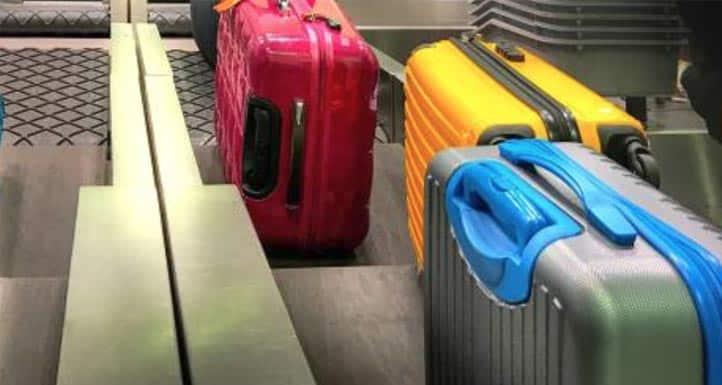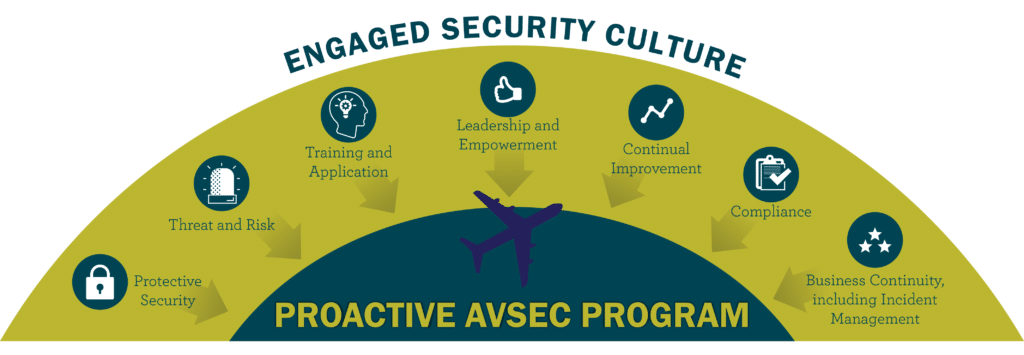Airport Culture Changes Advance Security
While security technology continues to make threat identification easier, airports also are recognizing that their cultures play a large role in keeping travelers, staff and facilities safe. U.S airports are exploring Security Management Systems (SeMS), similar to those long used in Europe and Asia, to supplement in-place security systems and close gaps that technology can’t bridge.
An airport is much like a small city, functioning around the clock, with as many as 20,000 to 30,000 employees moving in, around and out of it every day. SeMS is an organized approach to assessing and managing security that, above all, recognizes that each of these employees—from high-level executives, to operations staff, vendors and maintenance crews—has a unique role in enabling security.
Security Management Systems (SeMS) close gaps that technology can’t bridge.
Employees trained in how to appropriately respond to and report potential threats can easily and cost-effectively supplement even the most sophisticated of security systems. They can observe and react to things that seem out of the ordinary, which analytic cameras miss. Employees with airport-wide access, such as maintenance workers, can see and identify potential threats where cameras aren’t installed. Workers who spend entire shifts in specific areas can identify anomalies that a security guard passing at distinct intervals through the area may not see. Staff who work directly with thousands of air travelers each day can rely on their senses and natural instincts to detect unusual behaviors that security equipment technology cannot. And employees who feel more personally responsible for their role in maintaining security are more engaged and productive, which benefits everyone.

“Employees with airport-wide access can see and identify potential threats where cameras aren’t installed.”
Implementing SeMS requires thoughtful planning, design and roll-out, as well as continuous management. A knowledgeable consultant with deep experience in all aspects of an airport’s design, construction and daily operations, as well as its security considerations, can help develop an SeMS that is comprehensive, site-specific, cost-effective and dynamic.

Educate Top Management and Cultivate Buy-in
A commitment to security must begin at the highest levels. Bring board members, department heads, airlines, and other stakeholders into the process at the earliest stages. Then, tangibly and consistently demonstrate that commitment by talking about it, allocating resources to it, and selecting key staff to shepherd it.
Assess Security Threats and Existing Resources
Each airport has unique characteristics that affect its overall security. Take ample time to perform a detailed, objective assessment of airport operations, existing systems and protocols, potential threats and areas of vulnerability. Then, take an equally objective look at your existing budget, staff and facilities to determine both current and needed resources.

“Each airport has unique characteristics that affect its overall security”
Allocate Resources and Determine Responsibilities
SeMS works best when a dedicated budget and staff is allocated for it. Collaborate with land- and air-side stakeholders to identify funding sources and determine who will be responsible for managing the SeMS. In addition, clearly define how the SeMS will be managed and overseen, and develop procedures, manuals and other tools that will govern the process and clearly define responsibilities and expectations.
Educate, Train and Communicate
Clear, consistent, multi-platform communication is an essential first step in rolling out SeMS to staff. Make sure your staff knows their value in the process, and involve them in both planning and execution. Use live or computer-based training, meetings, manuals and special events to keep staff informed and engaged. Solicit input via formal processes and acknowledge feedback promptly.
Formal recognition programs also are helpful, and let employees know that reports of potential threats are being heard and appreciated. Also, use reporting mechanisms that employees feel comfortable with, such as a dedicated telephone line, email address or web page. Finally, reiterate often—to all levels of management—that reports are welcome. Employees won’t make reports if they feel their direct supervisors or higher-ups would disapprove.
Follow-up
Demonstrated, consistent follow-up to threat reports is crucial. If employees see their reports are taken seriously, they’re more likely to remain engaged. If reports are ignored, unacknowledged or discouraged, employees will quickly feel disenfranchised and abandon their roles in the process.
Cultivate Continuous Improvement
Feedback is important before, during and after SeMS implementation. Ensure that all staff levels have appropriate mechanisms for providing feedback and use that feedback to make changes as necessary. It’s also important to regularly and objectively measure the system’s performance. Use measurement tools that combine both continuous, daily monitoring and scheduled, independent audits, and communicate your findings to stakeholders and staff.
Plan for Change
Like airports themselves, SeMS must change to keep up with evolving security threats. Today’s leading-edge security devices will inevitably become obsolete, replaced by ones that are faster, more efficient, less expensive, easier to manage, more precise, or more robust. To keep airports safe, SeMS must likewise evolve and change. Budget and plan for this inevitable evolution, and step up communication, training and engagement each time an impacting change is made, so that new protocols are universally understood and assimilated.
Recognize that Even Small Changes Have Big Impacts
 Collaborating with all staff levels can yield valuable insight, and understanding the “why” behind existing security shortfalls can lead to surprising solutions. For example, when a security checkpoint showed concerning drops in productivity at certain times of day, we asked “why,” rather than recommending penalties. Interviews with staff revealed that security officers were spending 20 minutes of their hour-long breaks just getting to and from the airport cafeteria.
Collaborating with all staff levels can yield valuable insight, and understanding the “why” behind existing security shortfalls can lead to surprising solutions. For example, when a security checkpoint showed concerning drops in productivity at certain times of day, we asked “why,” rather than recommending penalties. Interviews with staff revealed that security officers were spending 20 minutes of their hour-long breaks just getting to and from the airport cafeteria.
When the airport converted an unused office at the checkpoint to a lounge and mini-café, security officers were able to fully enjoy their hour-long breaks and were more productive when returning to work. This small change was easily and inexpensively implemented, and directly affected both employees’ productivity and the level of service they provided, making everyone safer in the process.
Learn more about Burns' security design & consulting services
Security Design & Consulting


